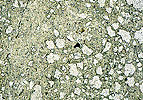
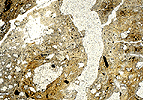
The formation of both processes is conditioned by the existence of water layers that more or less permanently saturate the soil causing extensive hydromorphy (permanent for gleization and temporary in the case of pseudogleization).
As the water slowly moves through the soil, it loses oxygen and at the same time it is acidified by the effect of the organic matter, so the environment becomes a reducer, which will have an impact on the soil, mainly in relation to the iron and manganese compounds, since their edaphic and chemical behaviours are going to very different depending on the existing redox potential. In reducing conditions, Fe and Mn are mobilised, being redistributed through the profile, and if there are dry conditions, oxidation is caused, with the subsequent immobilisation. As a result, Fe and Mn washing areas are caused (discoloured areas and areas of green and grey colours) and other Fe / Mn accumulation areas (with red and black colours).
If the saturation conditions are maintained
constant throughout the year, the reducing conditions predominate
and the soil mass is discoloured.


When the soil goes through more or less long seasonal drying phases (due to climate alternation with fluctuation of the phreatic stratum, for example), an alternation of oxidising and reducing conditions is caused and many reddish stains appear due to the ferrous compounds next to other greenish and grey areas.
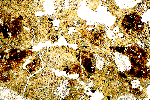
Often, when the soil is not as impermeable, during the reducing phases, the reduced forms of Fe and Mn are mobilised and they are eliminated from the profile, leaving extensive discoloured areas, of more or less light greys among reddish stains.
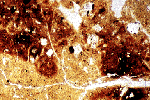
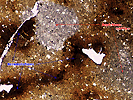
Both the discolorations and the accumulations appear in the microscope forming:
![]() Hypo-coatings (accumulations and depletions)
Hypo-coatings (accumulations and depletions)
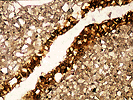
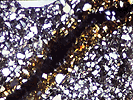
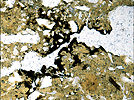
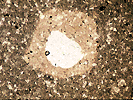
images of hypo-coatings of: Fe, Mn and depletion compounds, respectively.
![]() Nodules (of Fe)
Nodules (of Fe)
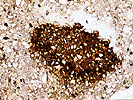
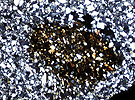
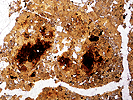
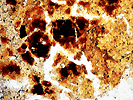
![]() Affecting all the groundmass
Affecting all the groundmass
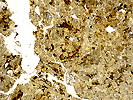

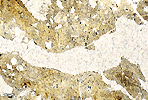
In conclusion, as we have seen, there seems to be a clear relationship between the hydric conditions of a profile and its micromorphological features. This fact is very important, since to recognise the presence of an excess of water in the soil, we would have to develop complicated and laborious measurements in the field on the depth and fluctuations of the water table, of the water retained, of its dissolved oxygen content, of the redox potential and of the edaphic temperature throughout the year and for many years. But fortunately, the majority of all these conditions can be deduced directly and instantaneously by the simple observation of the morphological and micromorphological features of the soil. Therefore, the speckling of horizons has been used universally as a sign of hydromorphy, although it has to be clarified that sometimes the cause to effect ratio is not always complied with totally (in other words, excess of water to hydromorphic features) due to the existence of certain conditions, some which impede reduction, such as the excess of dissolved oxygen in the water, or the absence of organic matter, others which make the necessary microbial activity difficult, such as a very low temperature, or an excessively acidic pH and sometimes the micromorphological features are inherited from past conditions that do not reflect the soil's current situation.